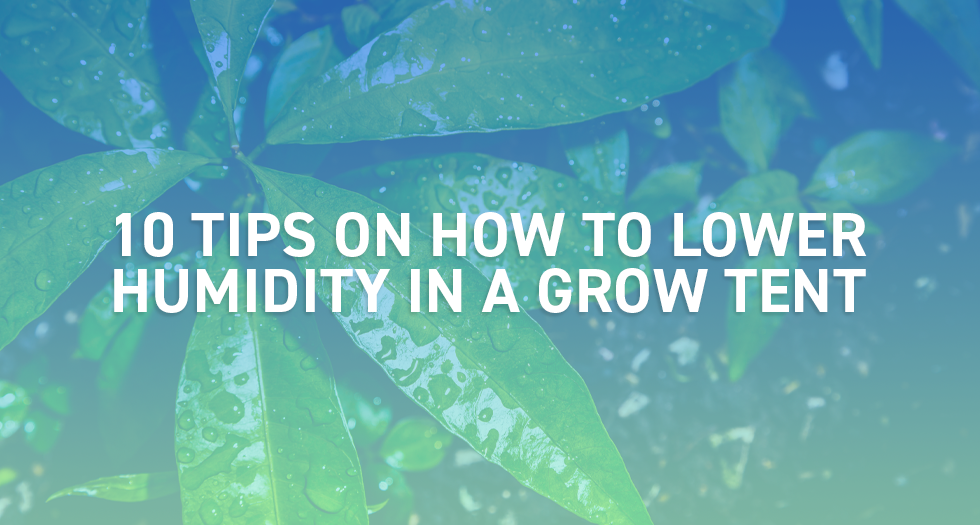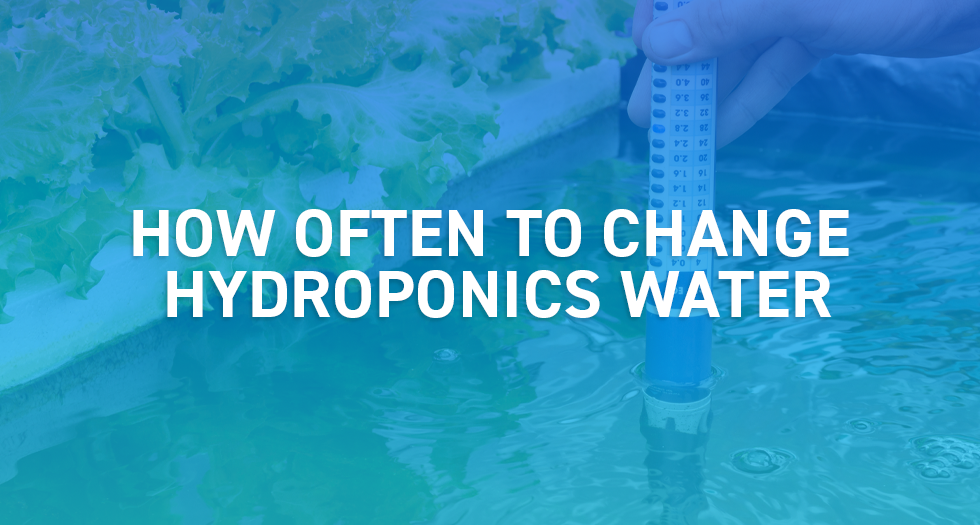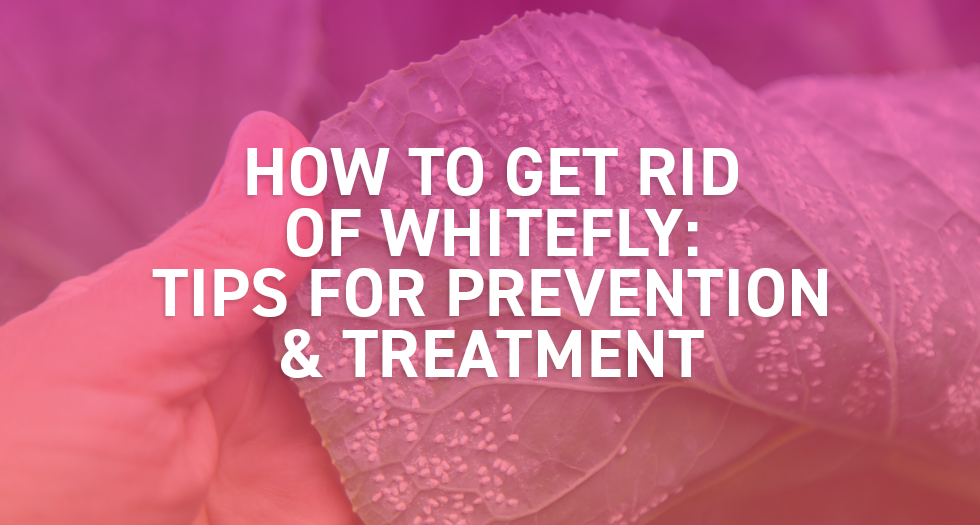High levels of humidity can cause issues such as poor plant health, mould, mildew, pest problems, disease, and lower yields. If you’re struggling to lower humidity in a grow tent, keep reading for industry tips and learn how excess humidity can damage your plants.
By carefully monitoring and adjusting the grow environment, you can create the perfect environment for your plants to thrive.
What damage can high humidity cause to plants?
High levels of humidity can be detrimental to indoor crops, threatening plant health, quality and harvest. Some common problems and diseases that negatively impact crop health include:
- Fungal Diseases: High humidity creates the perfect environment for fungal diseases. Common fungal diseases that flourish in high humidity include powdery mildew, and grey mould (Botrytis), among many others.
-
Powdery mildew is a fungal disease that attacks the foliage, stems, flowers and fruit of host plants. It is caused by various species of ascomycete fungi and has several scientific names.
It appears as white powdery spots, similar to talcum powder, on the stems and leaves of plants. This disease causes many issues such as poor plant health, reduced photosynthesis, leaf damage, stunted growth, and low yields.
-
Botrytis cinerea (also known as grey mould) appears on leaves, stems and flowers as patches of greyish brown fuzzy mould. The mould can attack any part of the plant, causing bud rot and decay.
Botrytis spreads rapidly throughout the grow space and has the potential to wipe out an entire crop. Regular plant inspection, climate management and swift treatment is essential.
Find out how to manage Botrytis and powdery mildew.
-
Pest Problems: Grow environments with high humidity are prone to pest infestations. This is because several pests such as spider mites, whiteflies, fungus gnats, thrips, and aphids thrive in warm, wet environments.
Pest colonies can quickly multiply if unchecked, attacking plants, feeding on sap, and spreading disease and viruses. Careful management of the environment, preventing excess humidity, and treating pests as soon as they are noticed can help combat these invasive insects before they devastate your crop. - Transpiration Problems: Excess humidity in the grow environment can impede a plant’s ability to transpire. Transpiration is the process of a plant absorbing water through the roots, transporting it throughout plant cells, and finally evaporating water vapour through its leaves.
Poor transpiration has a direct impact on nutrient uptake which can lead to several issues. These include nutrient deficiencies, stunted growth, chlorosis (yellowing of leaves), necrosis (brown or black spots caused by severe deficiencies and dying cells), weak structural integrity, reduced immunity, lower quality fruits, and poor yields.
When the surrounding air has high humidity, the concentration of water vapour in the air is high. As a result, the water vapour pressure gradient (the difference in water vapour concentration in the leaves and the surrounding air) is reduced. This combined with typically higher air temperatures encourages the stomata to close to prevent water loss, leading to a reduced transpiration rate.
Reduced transpiration in these conditions can also have a direct impact on water potential gradient. This refers to the difference in water potential between two points such as the leaves and the roots. If the water potential gradient is too high, osmosis and nutrient uptake is reduced. If a plant cannot release water vapour, it loses the ability to draw water through the roots. As a result the plant can suffocate due to reduced gas exchange and a build-up of toxic gases within the plant tissues.
-
Bacterial Infections: Excess moisture caused by high humidity can create the perfect environment for bacterial plant pathogens to thrive and multiply. Some of the common diseases that flourish in warm, wet grow environments include bacterial leaf spot, blight and soft rot.
Infected plants can suffer from a range of symptoms including severe leaf damage, reduced photosynthesis, leaf drop, rot, and a reduction in overall plant health and yield. Cellular damage can also create entry points for new pathogens to enter which can lead to secondary infections. -
Root Rot: Excess humidity and slower rates of transpiration can cause the soil or substrate to become too moist which can lead to root rot. Warm humid conditions in the root zone provide the ideal environment for both fungal and bacterial infections to thrive.
Roots decay, become brown and mushy and lose the ability to efficiently absorb water and nutrients. Root rot can lead to problems such as wilting, stunted growth, yellowing leaves, a putrid smell, decline in plant health, and in many cases, total loss.
How to Lower Humidity in a Grow Tent
Maintaining the right balance of humidity in your grow tent will ensure a healthy environment and maximise yields. If humidity is too high, follow these tips on how to lower humidity in a grow tent for healthy crops and huge harvests.
- Monitor temperature and humidity: Monitoring grow tent temperature and humidity is a key aspect for successful indoor plant cultivation. Many grow room thermometers include hygrometers to monitor both relative humidity and temperature. Some even facilitate mobile monitoring via an app, like the ThermoPro Bluetooth Indoor Humidity & Temperature Monitor.
- Increase ventilation: Ensuring the grow space has adequate ventilation is essential. Basic equipment for the grow environment includes extractor and intake fans (or inline fans), fan controllers, oscillating fans, and quality ducting. When humidity is high, increase the speed of air exchange to move air through the grow space at higher rates. This will improve air circulation and reduce the build-up of stagnant pockets of warm air.
- Use a dehumidifier: Dehumidifiers remove excess moisture from the air. They can be used year round alongside humidifiers to ensure the correct balance of humidity in the grow space. There are a range of options to suit any budget. Cheap options include simple dry pots, and hanging dehumidifiers. More reliable options include specialised units like the Ram 12L dehumidifier that monitor and maintain desired levels.
-
Controlled watering: Water plants carefully to avoid spillages and waterlogging. If hand watering, check the soil or substrate first to avoid overwatering.
Watering systems such as drip irrigation provide precise control, minimising runoff and evaporation. Capillary matting is another option to control watering. The matting absorbs water from a reservoir which is absorbed by the plant roots as needed.
If using hydroponic systems, regularly check the reservoir, avoid overfilling, and use a timer if necessary to control nutrient solution delivery. Always remember to monitor EC & pH to prevent nutrient imbalances. - Use LED grow lights: Some types of grow lights like high intensity HPS lamps produce a lot of heat. These lamps can accelerate water evaporation and increase humidity. LED grow lights produce less heat, which in turn reduces evaporation from grow media and nutrient solutions, helping to lower humidity.
- Install an air conditioner: Water evaporates more quickly in warm temperatures, so using an air conditioner will help to reduce both the temperature and humidity in your grow tent. Air conditioning units cool air, causing moisture to condense. The unit then extracts excess moisture to keep the grow space drier.
- Space plants apart: Space plants carefully throughout the tent. This will improve airflow around your plants and prevent stagnant pockets of warm, stale air.
- Reduce the number of plants: Overcrowding restricts airflow and increases humidity. It also limits light exposure which will affect plant development. If your tent is overcrowded, remove some plants or invest in a bigger grow tent.
- Pruning: Prune plants regularly to remove excess foliage. Pruning will keep your plants in shape, increase airflow, and reduce the total surface area of leaves, thereby reducing the amount of water vapour released into the air.
- Minimise excess water: Always wipe up spillages, remove excess water from trays and saucers, and ensure damp clothes are removed from the grow space.
Conclusion
Humidity control in the grow space reduces the risk of disease, pests, and fungal and bacterial infections. Creating the ideal environment will give you the best chance of a successful crop. As well as lowering grow tent humidity, you may have times where you need to raise humidity.
Remember that crops require different levels of humidity at different stages of plant growth.
As a general rule of thumb, plants need a relative humidity (RH) of around 50-70% during the vegetative stage. For flowering and fruiting, humidity should be reduced to around 40-50%. Different plant species may have different requirements, so check what’s best for your crop.




